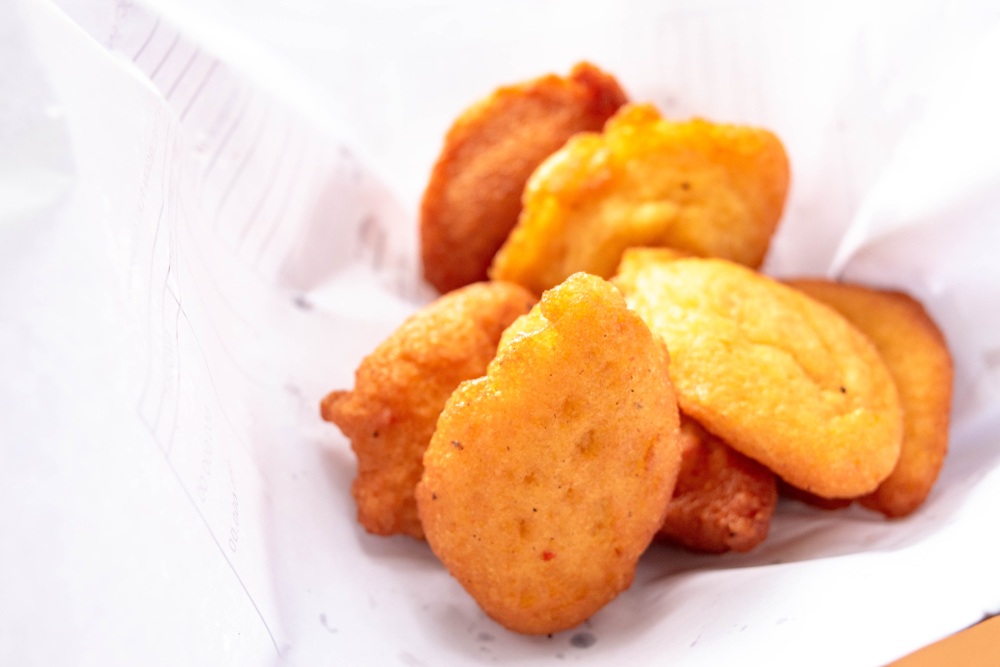Akara: West Africa’s Versatile Bean Fritter
Roaming through West African markets in the cool mornings, you’re bound to find vendors frying golden brown balls, releasing a tempting aroma that beckons passersby. These are Akara, delectable deep-fried bean cakes that hold a special place in the heart of West African culinary traditions.
Akara’s Roots: A Bite into History
Akara has deep roots in West African cuisine, with variations found across Nigeria, Sierra Leone, Mali, and more. These bean cakes, made primarily from black-eyed peas, have evolved over centuries, carrying with them stories of migration, cultural exchange, and shared culinary traditions.
Crafting Akara: Ingredients & Quantities
- 2 cups black-eyed peas, soaked and peeled
- 1 small onion, finely chopped
- 1-2 scotch bonnet peppers, deseeded and finely chopped
- 1 tsp ground crayfish (optional)
- Salt to taste
- Oil for deep frying
Step-by-Step: Making Flavorful Akara
- Bean Paste Preparation: After soaking and peeling the black-eyed peas, blend them in a food processor until smooth, adding a little water as necessary. The resulting paste should be thick but not overly dense.
- Transfer the bean paste into a mixing bowl. Add chopped onions, scotch bonnet peppers, ground crayfish (if using), and salt. Mix thoroughly until all ingredients are well combined.
- Heat oil in a deep frying pan over medium heat. To test readiness, drop a tiny bit of the batter into the oil. It should sizzle and rise to the surface, indicating the oil is hot enough.
- With a spoon or your hand, scoop portions of the bean mixture and carefully drop into the hot oil. Fry the Akara in batches, ensuring they turn golden brown on all sides. This usually takes about 3-4 minutes.
- Using a slotted spoon, remove the Akara from the oil and drain them on paper towels to get rid of excess oil.
- Serve warm. Akara pairs beautifully with pap (a smooth, creamy maize porridge) or bread as a sandwich. It’s also delightful with a side of spicy tomato sauce.
Tip: For added flavor, some chefs incorporate flaked mackerel fish or shrimp into the bean mixture before frying.

More than a Snack: Akara in West African Culture
Akara is more than just a culinary delight; it represents community and celebration. Often enjoyed during breakfast or as an evening snack, Akara is also a staple at special occasions, symbolizing joy, togetherness, and cultural pride.
Understanding Akara: Common FAQs
1. Are there different types of Akara?
Yes, while the base ingredient is usually black-eyed peas, variations can be found using lentils or other legumes. Some regions also add vegetables or seafood for a different twist.
2. Is Akara eaten throughout West Africa?
Absolutely. While Akara is deeply rooted in Nigerian culture, its popularity extends to several West African countries, each adding its own regional flair to the dish.
3. Can Akara be made in advance?
While Akara is best enjoyed fresh from the fryer, they can be made in advance and frozen. Simply reheat in the oven to regain crispiness before serving.
4. What makes Akara different from other fritters?
The distinct flavor profile of Akara, derived from black-eyed peas combined with spicy and savory ingredients, sets it apart from other global fritters.
5. Can Akara be made spicy?
Definitely. Adjust the quantity of scotch bonnet peppers based on your heat preference. Adding more will give the Akara a fiery kick.
Discover more about Akara and other African roadside favorites with our comprehensive guide.
